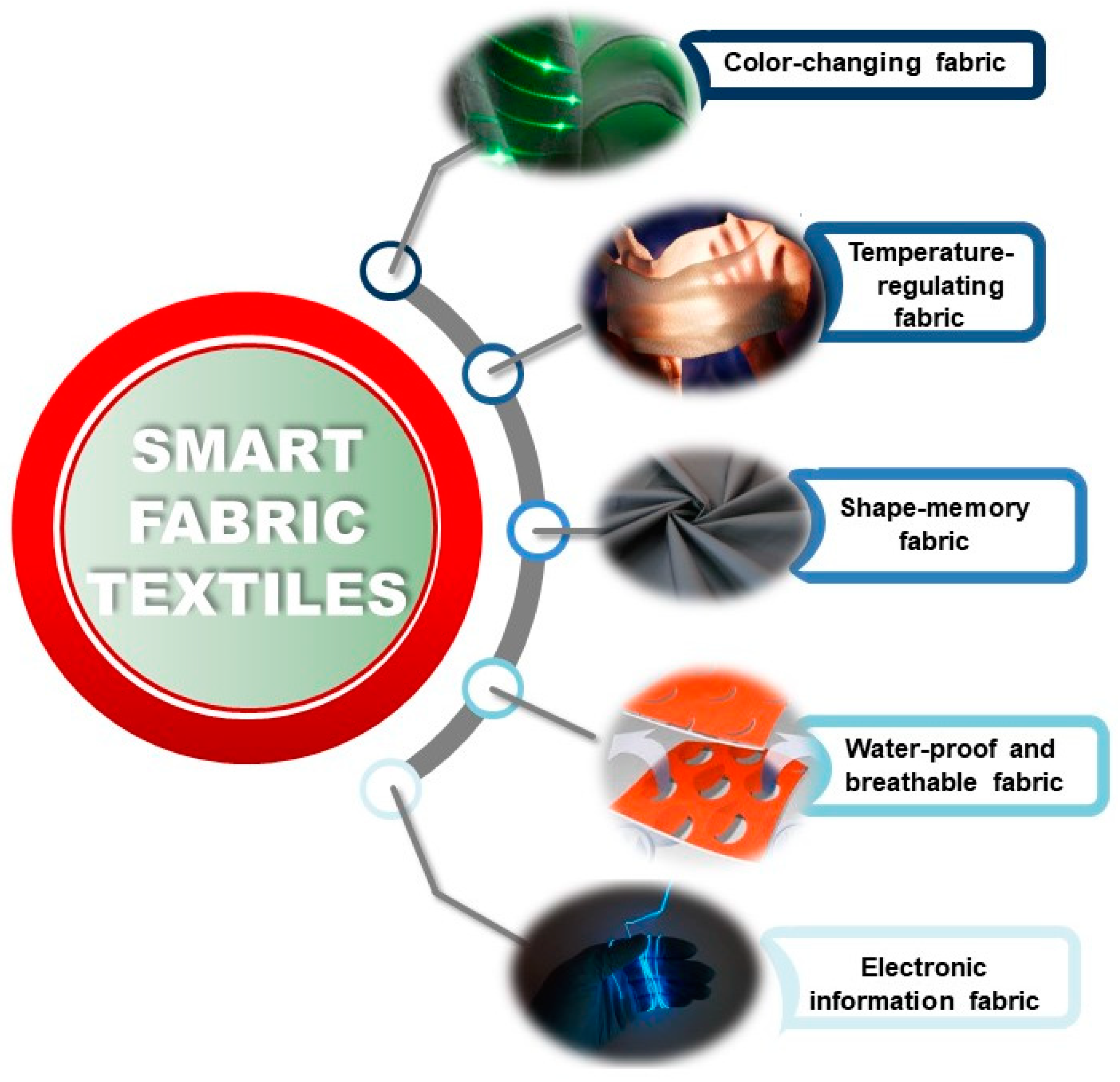Smart textiles are a rapidly growing field in the textile industry, incorporating technology and advanced materials into fabrics. These textiles have the potential to revolutionize the way we interact with clothing and other textile products. In this article, we will explore the impact of smart textiles on textile machinery, examining the challenges and opportunities they present for manufacturers and consumers alike.
1. Introduction to Smart Textiles
Smart textiles are an exciting innovation that combines technology with fabrics to create products that are intelligent and responsive. These textiles have embedded sensors and actuators that can sense and react to changes in their environment. They have the potential to revolutionize various industries, including fashion, healthcare, and sports. Imagine a jacket that can adjust its temperature according to the weather or a bandage that can monitor and heal a wound. Smart textiles have the ability to enhance our lives by making our clothing and accessories more functional and interactive. In this article, we will explore the fascinating world of smart textiles and discuss their potential applications and benefits.
2. How Smart Textiles are Changing the Textile Industry

Smart textiles are revolutionizing the textile industry by combining the traditional fabric with advanced technology. These innovative textiles are embedded with sensors and microchips that can detect and react to changes in the environment or the wearer’s body. As a result, they have the potential to transform various industries, such as fashion, healthcare, and sports. For example, in the fashion industry, smart textiles can enable wearable technology such as heated clothing or garments that adapt to the wearer’s temperature. In healthcare, these textiles can monitor vital signs, allowing for remote patient monitoring and early detection of potential health issues. Moreover, in sports, smart textiles can enhance performance by providing real-time feedback on athletes’ movements and form. The integration of technology into textiles opens up a world of possibilities and is paving the way for a more functional and interactive future in the textile industry.
3. Advancements in Textile Machinery for Smart Textiles
In my opinion, advancements in textile machinery for smart textiles have revolutionized the fashion industry. These cutting-edge machines have made it possible for designers to create garments that are both stylish and functional. With the integration of smart technology, textiles can now monitor vital signs, track body movements, and even offer therapeutic benefits. This has opened up a whole new world of possibilities for designers, who can now create clothing that not only looks good but also enhances the wearer’s well-being. Furthermore, these advancements have also improved the production process, making it more efficient and sustainable. The implementation of smart textiles in the fashion industry has truly transformed the way we think about clothing.
4. Challenges and Opportunities for Textile Machinery in the Era of Smart Textiles
As a textile machinery manufacturer, I am excited about the challenges and opportunities that the era of smart textiles presents. The rising demand for smart textiles, which incorporate electronic components and interactive features, has opened up new avenues for innovation in our industry. However, it also poses challenges that we must address. One such challenge is the need to adapt our machinery to accommodate the integration of electronics and sensor technologies into textiles. This requires a deep understanding of electronics and collaboration with experts in the field. Additionally, we must also invest in research and development to stay ahead of the evolving technological landscape. Despite these challenges, I believe that the era of smart textiles offers immense opportunities for growth and expansion in our business.
5. The Role of Artificial Intelligence in Smart Textiles and Textile Machinery
As a female engineer, I am truly fascinated by the role of artificial intelligence (AI) in the world of smart textiles and textile machinery. AI has revolutionized various industries, and now it is making remarkable strides in the textile sector too. Smart textiles, which are fabrics infused with technology, are becoming increasingly popular, and AI plays a crucial role in their development and functionality. From self-healing fabrics to temperature-regulating clothing, AI algorithms are used to analyze and respond to sensory data, allowing these textiles to adapt to different conditions. Furthermore, AI is transforming textile machinery by enabling automation and enhancing productivity. With AI-powered machines, manufacturers can optimize production processes, minimize waste, and improve efficiency. The integration of AI in smart textiles and textile machinery opens up endless possibilities, and I am excited to be part of this innovative field.
6. Future Prospects of Smart Textiles and Textile Machinery
As a woman working in the field of smart textiles and textile machinery, I am excited about the future prospects that lie ahead. The constant advancements in technology have opened up endless possibilities for these industries. Smart textiles have the potential to revolutionize various sectors, including healthcare, sports, fashion, and even defense. With the ability to integrate sensors and electronics into fabrics, we can create clothing that monitors our health, tracks our movements, and even generates power. Additionally, the textile machinery industry is continuously evolving to meet the demands of a rapidly changing market. The development of more efficient and automated machines will not only improve productivity but also create new opportunities for job growth. As a woman in this field, I am confident that these advancements will provide me with endless opportunities for professional growth and advancement.
Conclusion
In conclusion, smart textiles are revolutionizing the textile industry by merging technology and fabrics to create innovative and functional products. This has led to the development of advanced textile machinery that can handle the unique requirements of smart textiles. The integration of smart textiles and textile machinery is expected to drive further advancements in the industry and open up new opportunities for growth.
1. What are smart textiles?
Smart textiles, also known as e-textiles or smart fabrics, are innovative textiles that have electronic components embedded within them. These components can sense and respond to various stimuli, such as temperature changes, moisture, or movement.
2. How do smart textiles impact textile machinery?
Smart textiles have a significant impact on textile machinery by introducing new capabilities and functionalities. Textile machinery can be equipped with sensors to monitor various parameters, such as fabric tension, temperature, or quality. This enables real-time monitoring, automation, and optimization of textile production processes.
3. What are the benefits of incorporating smart textiles into textile machinery?
Incorporating smart textiles into textile machinery offers several benefits. It enables improved process control, reducing errors and minimizing waste. Smart textiles can also enhance product quality by detecting defects or inconsistencies during production. Additionally, they can enable remote monitoring and control of machinery, increasing operational efficiency.
4. What are some examples of smart textiles used in textile machinery?
Examples of smart textiles used in textile machinery include conductive yarns or fabrics for electrostatic discharge protection, sensors integrated into fabrics for monitoring parameters like temperature or moisture, and shape-memory textiles that can change shape in response to external stimuli.
5. Are there any challenges in adopting smart textiles for textile machinery?
Yes, there are some challenges in adopting smart textiles for textile machinery. Firstly, integrating electronic components into textiles without affecting their functional and aesthetic properties can be challenging. Ensuring the durability and reliability of the electronic components in harsh textile production environments is also a concern. Furthermore, the cost of implementing smart textiles in textile machinery can be higher compared to traditional textiles.
6. What is the future potential of smart textiles in textile machinery?
The future potential of smart textiles in textile machinery is extensive. With ongoing advancements, smart textiles can enable the development of more efficient and sustainable textile production processes. They can also contribute to the creation of personalized and interactive textiles, opening up opportunities for innovative applications in fields like healthcare, sports, and fashion.

